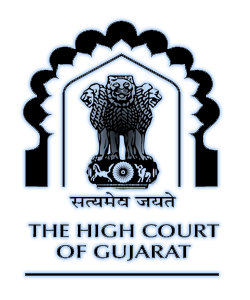
(A) Evidence Act (1 of 1872) S. 85 — Power of attorney — Presumption as to due execution and authentication — Is available in favour of original Power of Attorney holder provided mandate of S 85 is duly followed {" S.85 of the Evidence Act lays down that the Court shall presume due execution and authentication of power of attorney when executed before and authenticated by a Notary Public, or any Court, Judge , Magistrate, Indian Counsel or it’s Vice Counsel or representative of the Central Govt., etc. This presumption is available in favour of the original Power of Attorney holder provided mandate of S.85 is duly followed. In the case on hand, neither the original power of attorney was produced nor notarized photocopy was produced on record. Consequently, both affiants failed to prove that they are the duly authorized persons to give evidence on behalf of the plaintiff bank. (Para 18) "}
(B) Civil Procedure Code (5 of 1908) O. 18, Rr. 4, 5, — Examination-in-chief — In form of affidavit — None of affiants entering witness box and confirming that contents of affidavit are as per his say and affidavit is under his signature and this statement being made on oath to be recorded by following procedure prescribed under R 5 — Said affidavits cannot form part of evidence AIR 2003 Bom 371 Followed (Para 19,20)
(C) Evidence Act (1 of 1872) S. 61, 62, 63 — Documentary evidence — Document produced as primary or secondary evidence — Has to be proved in manner laid down in Ss 67 to 73 (Para 24)
(D) Evidence Act (1 of 1872) S. 63 — Secondary evidence — Cannot be accepted unless sufficient reason given for non-production of original {" S.63 of the Evidence Act provides for leading secondary evidence. Secondary evidence cannot be accepted without sufficient reason being given for non-production of the original. The loss of original document must be shown in order to lead secondary evidence. Secondary evidence of the document can be allowed to be lead only where original is proved to have existed but was lost or misplaced. The prior permission of the Court is required to be taken for producing secondary evidence of the documents on the grounds that original documents were lost. To sum up, when anybody wants to lead secondary evidence, two things are required to be proved; there must be evidence of the existence of the original documents and there must be evidence of their loss. AIR 1973 Bom. 66, Rel. on. (Para 27,29) "}
(E) Evidence Act (1 of 1872) S. 67 — Documentary evidence — Proof — Suit for recovery of loan amount, filed by bank — Demand notice of advocate — Photo copy of typed copy produced without having signature of advocate who issued said demand notice — Nobody proved contents of demand notice — No evidence on record showing despatch of demand notice or receipt thereof by defendants — Demand notice not admissible as legal evidence (Para 31)
(F) Evidence Act (1 of 1872) S. 67 — Documentary evidence — Execution of document — Proof — There must be specified evidence to show that signature purporting to be that of executant is in the handwriting of the executant {" S. 67 refers to documents other than documents required by law to be attested. It says that the signature of the person alleged to have signed a document (i.e. execution) must be proved by producing evidence to the effect that of the executant is in fact in his handwriting. The execution of authorship of a document being a question of fact, it can be proved like any other fact by direct or circumstantial evidence. The internal evidence proved by a document may also be of some help. In most cases the nature of evidence will depend on the nature of the documents and the circumstances of each case. S.67 does not require any particular mode of proofs that any writing or signature is in the hand of a particular person. If it is a letter, it must be proved as to who was the writer and who signed it. If it is an entry in a diary or notebook, its authorship must be proved, i.e. it is the diary or note book of the person whose statement it is alleged to contain. In a suit for money on account of sale of goods, the ledgers, challans and corresponding bills have to be proved to be in the handwriting of the person who has written them. The definition of ‘proved’ given under S. 3 must be read along with S.67 whic....
Buy and Download By Entering Following Details (Worth /-)
J


